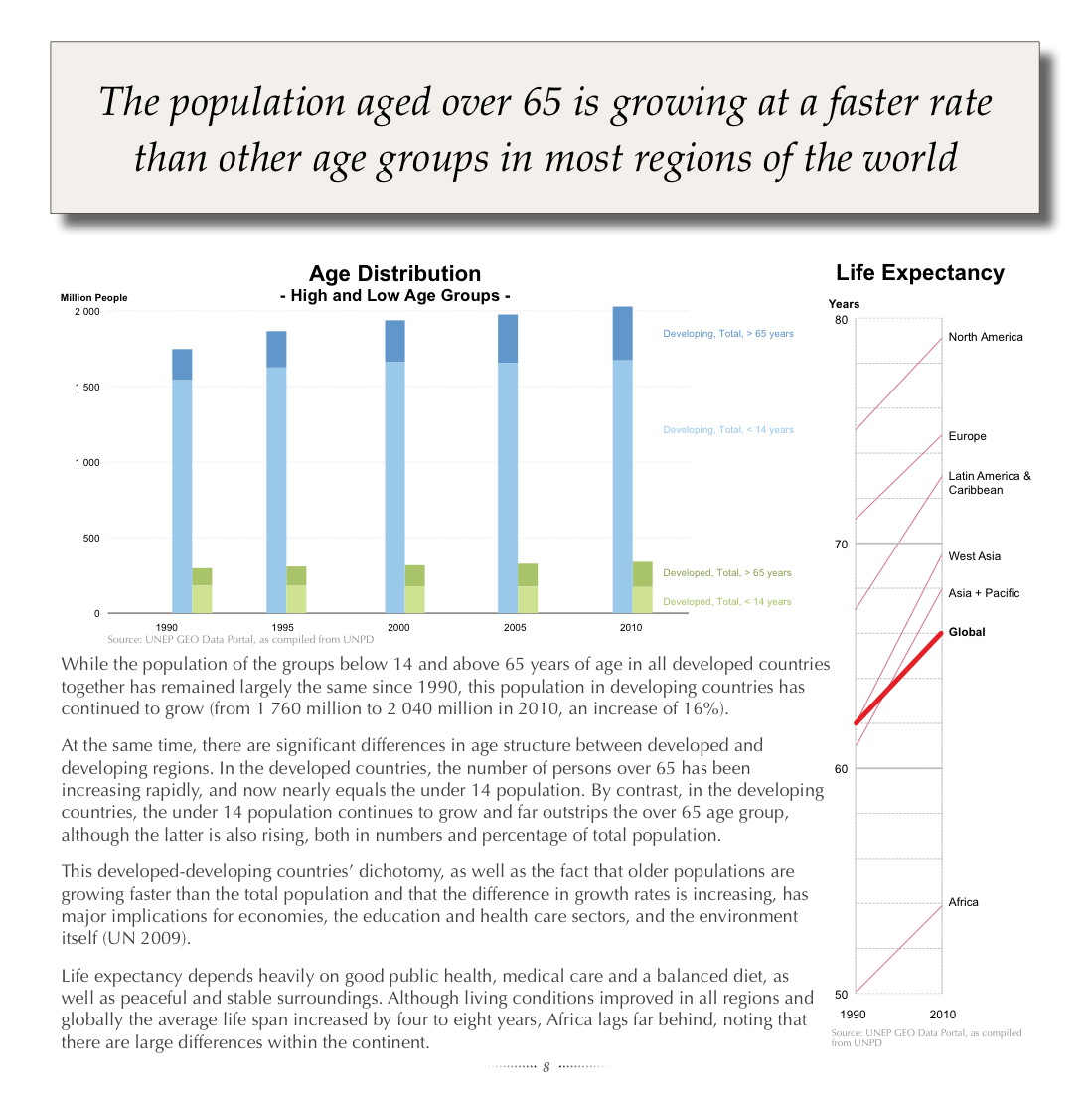Age Distribution & Life Expectancy (Keeping Track)
Description
The population aged over 65 is growing at a faster rate than other age groups in most regions of the world
While the population of the groups below 14 and above 65 years of age in all developed countries together has remained largely the same since 1990, this population in developing countries has continued to grow (from 1 760 million to 2 040 million in 2010, an increase of 16%). At the same time, there are significant differences in age structure between developed and developing regions. In the developed countries, the number of persons over 65 has been60 increasing rapidly, and now nearly equals the under 14 population. By contrast, in the developing countries, the under 14 population continues to grow and far outstrips the over 65 age group, although the latter is also rising, both in numbers and percentage of total population. This developed-developing countries’ dichotomy, as well as the fact that older populations are growing faster than the total population and that the difference in growth rates is increasing, has major implications for economies, the education and health care sectors, and the environment itself (UN 2009). Life expectancy depends heavily on good public health, medical care and a balanced diet, as well as peaceful and stable surroundings. Although living conditions improved in all regions and globally the average life span increased by four to eight years, Africa lags far behind, noting that there are large differences within the continent.
This graphic is part of the publication Keeping Track of Our Changing Environment.
